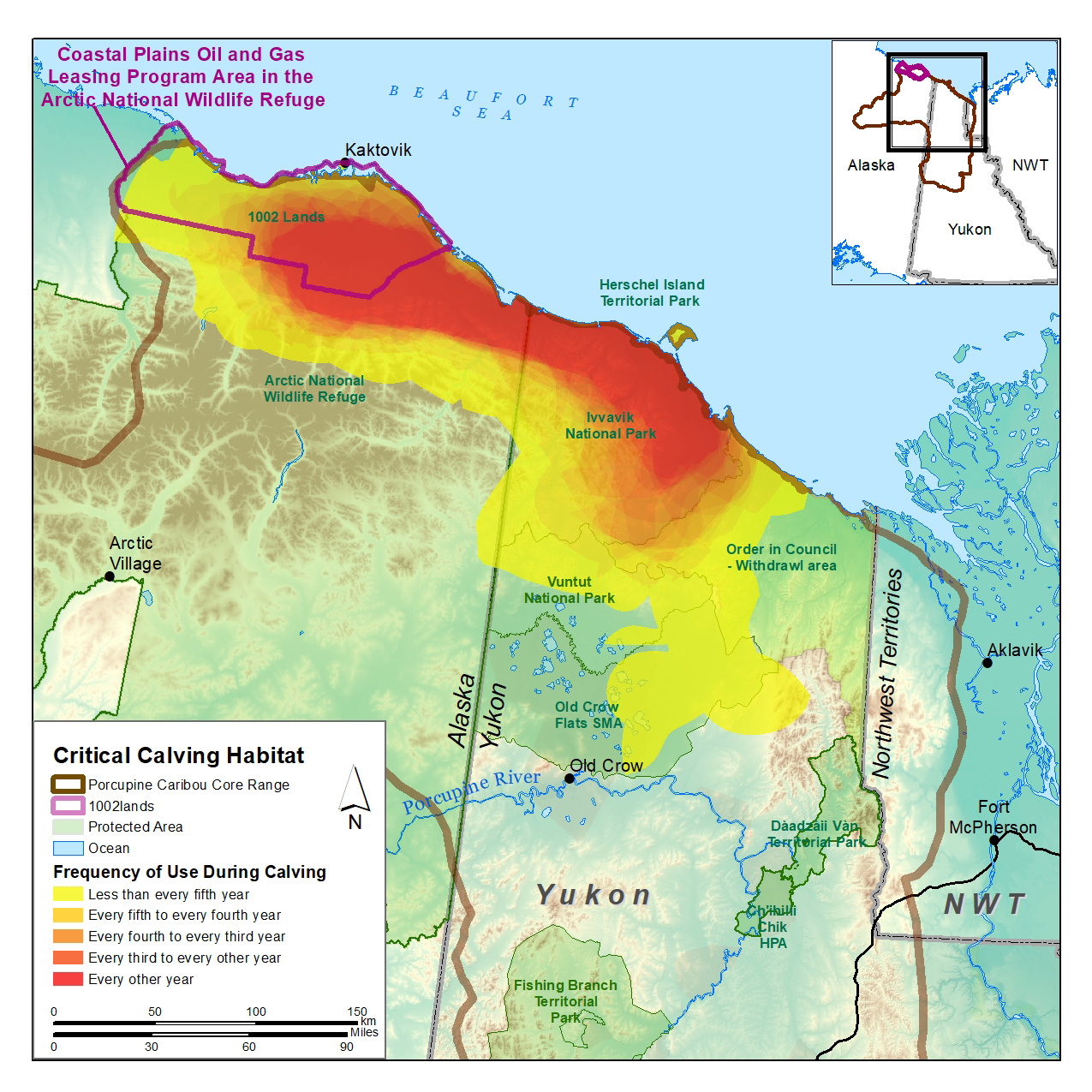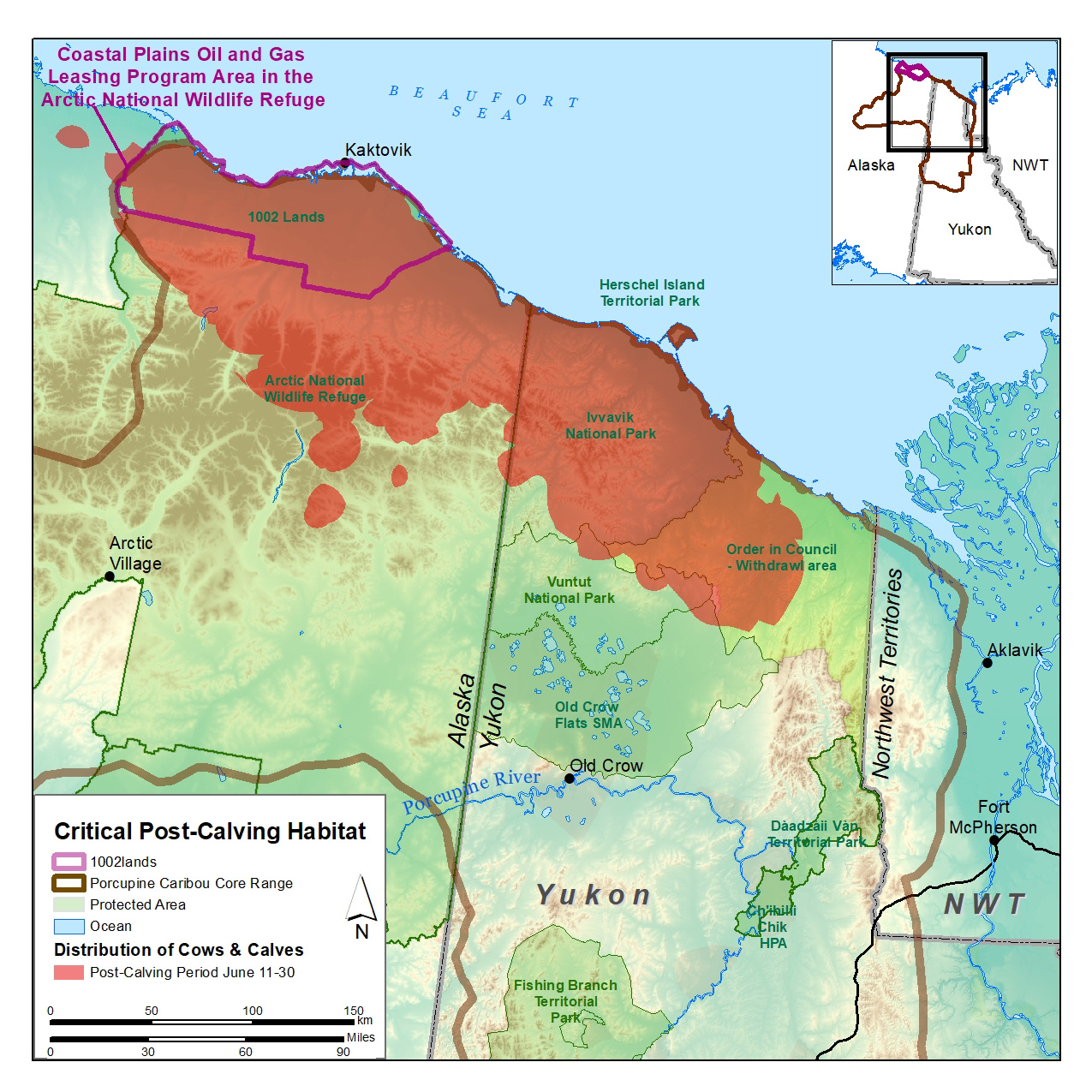The Porcupine Caribou Herd’s range covers over 201,000 square kilometres (roughly the size of Great Britain) of northern tundra and taiga between Alaska, Yukon and the Northwest Territories. Ensuring the long-term viability of the herd’s range has been an important focus of land managers over the past 50 years and an important focus of Indigenous peoples for thousands of years. In Canada, two major national parks and many other conservation areas have been established to protect key habitats.
Each spring the herd migrates to the coastal plain of northeast Alaska and northwest Yukon to calve, which makes this portion of the range particularly critical habitat. Once there, caribou are able to access highly nutritious foods not available in other portions of their range in an area with relatively few predators. This is critical for the successful growth and survival of newborn calves. In Alaska, the Arctic National Wildlife Refuge has been an important conservation area to protect the calving grounds of the herd. The 1002 lands are used by the caribou for about one month, which is arguably the most critical of the whole year as it determines how many calves join the herd.
The future importance of this area to the herd, under various climate change models, show the 1002 lands remain critical and will likely become even more so. Climate change is affecting when their food (forage) begins to grow in the spring and summer and when snow melts. Under warming scenarios, forages are predicted to grow earlier and ‘green-up’ faster within the 1002 lands. Caribou actively select high quality forage in areas where snow is melting or melting. Thus, in the coming decades, the 1002 lands will become even more critical to the herd and its conservation.




